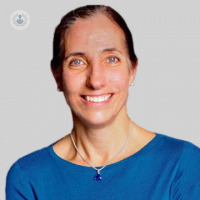How is breast augmentation surgery performed?
Written by:Are you considering a breast augmentation? If so esteemed London and Buckhurst Hill-based consultant reconstructive, plastic, and cosmetic surgeon, Miss Caroline Payne, has all the answers that you are more than likely seeking before your life-changing operation. She provides an expert overview on the procedure in our latest article here below.

What can I expect at an initial consultation for breast augmentation?
Firstly, it should be with the consultant or surgeon that is going to actually perform the surgery. The consultation should last around 30 minutes to give the patient enough time to go through a breast history, a general medical history, as well as a full medical examination.
From that, you will get an understanding of where the implant is going to be placed (either under the breast or muscle), as well as the size, texture, and the shape of the implant. Then, you will typically have a two-week cooling off period to think about everything before the surgery takes place, if you decide to go ahead and undergo it.
How can I choose the right breast implant for me?
You can see the type of implant available in your first consultation. Nearly 95 per cent of implants put in throughout the UK are made of silicone. After having an informed discussion with the surgeon, you will be able to make a well-informed decision as to what type would be the most suitable for you.
How is breast augmentation performed? Where is the incision made?
There will be various information videos on social media platforms that will show all different types of incisions. There are many different types of incisions that can be used. Around 90 per cent of implants in the UK are put in through an inframammary fold incision, which is a crease underneath the breast.
Some people can put them in via a periareolar approach, but this depends on whether or not you’re having another procedure done on the breasts, such as a mastopexy. Some people can also put them in through the axilla.
Breast augmentation is a day-case procedure performed under general anaesthetic. If patients have a drain in, then they would typically have to stay in hospital overnight.
Will the sensation in my nipple change?
The overall likelihood of change in sensation in the nipple is about 10 per cent of people, while three per cent of people suffer complete nipple sensation loss, which can be different in both breasts. The nerve supply to the nipple comes from either the skin or deep within the breast. If you have a supply to your nipple that is from deep within the breast, that nerve would then have to be cut to be able to put the implant in. This patient profile would experience nipple sensation loss.
If the implant is a fairly big one, the skin is stretched over the top of the implant, and this can result in a change in sensation to the breast skin as well, but this is usually temporary.
What realistic results can I expect?
Your expectations will have to be managed in the clinic, as you will be given a trial with the implants, and this trial will include wearing a bra with the implants. What the implant looks like under the breast and what it looks like when it is completely in is an entirely different thing.
There is a 3D photography system which is run by some clinics. This system takes the implant that you’ve chosen and imposes it underneath your breast. So, if you are really worried about how the implant will work underneath the breast, then you can go to one of these clinics and have that implant super imposed underneath the breast. This will give you a good impression of what the implant would look like.
Miss Caroline Payne is a highly established and experienced consultant reconstructive, plastic, and cosmetic surgeon. Book a consultation with her today via her Top Doctors profile if you are considering whether or not to undergo breast augmentation surgery.


